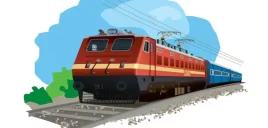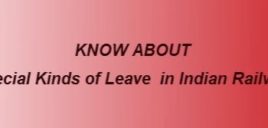Basic Electricity
Electricity – We cannot see it, but we can sense its effects like heating, chemical, magnetic etc.
Electric Current – The flow of electrons is called current. The unit of current is Ampere and measured by ammeter. It is denoted by ‘I’.
Voltage – Voltage can be defined as the difference of potential between two points of a circuit. One volt is the electric pressure which allows flow of one ampere of current against one ohm resistance. It is measured by voltmeter. Unit of voltage /potential difference is Volt. It is denoted by ‘V’.
Direct current – The current which does not change its direction and magnitude all the time is called direct current.
Alternate current -The current which alternate its direction and magnitude with respect to time is called Alternating current.
Resistance – The property of a material which opposes the flow of current through it is called resistance. It is denoted by ‘R’ and its unit is ohm. It is measured by ohm-meter.
Ohms law – Ohm’s law states that in any electric circuit if the physical condition (Temperature and pressure) remains constant than the current is directly proportional to the voltage and inversely proportional to the resistance.
I= V/R
Where I = current in amps
V = Voltage in volts
R = Resistance is ohms.
Conductor – The material, which allows the current to flow, at a given electrical pressure is called conductor.
Example – Silver, copper, Aluminum etc.,
Insulator – The material which does not allow the current to flow through it easily is called as Insulator.
Example – rubber, paper, wood, mica etc.
Voltmeter – It is used to measure the voltage of the circuit, it is connected in parallel in the circuit across the load.
Ammeter – It is used to measure the current of the circuit, it is connected in series in the circuit with the load.
Watt – It is the unit of power, Electric power is measured by wattmeter and is denoted by
‘P’ P = VI (1HP=746 watts)
Magnet – A Magnet is a substance which has the properties of attraction to iron pieces, it has two poles (north& south). Unlike poles attract each other where as like pole repel each other. Magnet lost its property if heated, hammering or fall from height.
These are of two types –
1. Permanent – It has fixed magnet power in different sizes, used as per requirement. Its magnetic power can not be change easily e.g. Bar, Compass needle, Horse shoe etc
2. Temporary – Its magnetic power can be increase/ decrease/zero. If electrical supply given in coil of copper wire winded on iron rod, iron rod produced magnetic power as electrical supply cut off magnetic power will lost. It is also called electro magnet, it is usually used in electric machines e.g. Generators, motors etc.
Switch – Switch is used in the electrical circuit to open or close the circuit. In locomotive toggle, Rotary and knife switches are sued.
Fuse – It is weakest part of electrical circuit. It melts and opens the circuit when the current increases beyond the specified value; it safe guards the circuit from over current.
Circuit breaker – It is safety device fitted in the close circuit to protect it from over current. Circuit breaker trips and opens the circuit when the current increases beyond the specified value; it safe guards the circuit from over current.
It has three positions ON, OFF & Trip. In OFF position toggle is downward position, in ON upward position and when trips it will in middle position.
If circuit breaker tripped and there is no defect in the circuit, then it is to be reset. To reset it first bring the toggle to OFF Position then take it to “ON” In loco the following circuit breaker are used
1. MB1- Main Battery breaker – 200 Amps
2. MB2 – Main Control Breaker – 150 Amps
3. CEB – Crankcase Exhauster Breaker – 15 Amps
4. FPB – Fuel Pump Breaker – 30 Amps
5. AGFB – Auxiliary Generator Field breaker – 15 Amps
6. HLB – head Light breaker – 30 Amps
7. Engine, Cab, Dome Light Circuit Breaker – 15 Amps
8. MFPB-1 & 2- Master Fuel pump breaker – 30 Amps
9. MCB 1, 2- Master control Breaker – 15 Amps
Relay – Relay is an electro-magnetic remote control device, it is used to open or close the control circuit. Control circuit is operated by interlocks which are in the relay itself.
Normally Open Interlock (NOI) – when the relay in de-energies condition, the contacts which are in open position are known as NOI
Normally Close Interlock (NCI) – When the relay in de-energies condition, the contact which is in close position are known as NCI
Contactors – Contactors are of two types
1. Electro magnetic contactor – In this contactor when current flows through the coil, coil gets magnetized (becomes temporary Magnet) due to this armature (Movable jaw) will be attracted towards fixed jaw. It is called contactor picks-up. When current flow cutoff the coil, coil gets demagnetized. due to this armature (Movable jaw) will be separate from fixed jaw. It is called contactor drops. In Loco the following electromagnetic contactors are fitted –
R1, R2 – Radiator fan contactors on back panel
CK1, CK2, CK3 – Cranking Contactors on Front panel
GFC – Generator Field Contactor on Front panel
FPC – Fuel pump contactor on Front panel
2. Electro Pneumatic Contactors – The contactors which required electrical current and compressed air to pick up, they are called as Electro pneumatic contactors. There are 11 Electro Pneumatic Contactors (Power contactors-9, BKT-01 and Reverser-01)
Power contactors: 3 contactor for series and 6 for parallel and they are connected with the following Traction motors.
S1 – Traction motor -1 & 4
S21- Traction motor -3 & 6
S31 – Traction Motor- 2 & 5
P1 – Traction Motor – 4
P21- Traction Motor -6
P31- Traction motor – 5
P2 – Traction Motor – 1
P22 – Traction Motor – 3
P32 – Traction Motor – 2
BKT (Braking and Traction Switch) – It is Electro pneumatic contactor BKT is fitted on front panel. BKT has two positions Motoring and Braking. To move the loco, BKT should be in motoring position and it should be in Braking position at the time of dynamic braking.
Reverser – It is Electro pneumatic contactor. REV is fitted on front panel each reverser has two EP valves, forward & Reverse; these are controlled by RH which is located on control stand. It has two positions, Forward & Reverse.
Excitation cards – They are seven in number provided in excitation panel
186 Reference Mixer card
187 Miscellaneous card
188 Pulse with modulator card
253 Oscillator card
254 Power transistor card
492 Voltage Control card
493 Function Generator card
Generator – It is a machine which converts mechanical energy into electrical energy. They are of two types
1. Separately excited generator – The generator in which the field is excited by external source is called separately excited generator.
2. Self excited generator – In this type of Generator field gets excited by its own armature current. Initially this type of generator produces electricity on the principle of residual magnetism. These are of three types
a. Series generator – It is a Generator in which the field winding is in series with the armature.
b. Shunt generator – It is a Generator in which the field winding is in parallel with the armature.
c. Compound generator – This Generator is the Combination of both series and shunt generator.
Alternator – This is an A.C. Generator, it generates A.C. current. In alternator field winding is in rotor and armature winding in stator. Slip rings and carbon brushes are used to give current to the rotor for excitation. The rotor when rotated by an external mechanical source produces alternating current in stator. It may be 3 phase or 1 phase. It produces higher voltage and requires less maintenance.
Motor – It is an electrical machine which converts electrical energy into mechanical energy. DC motors are of three types
1) DC series motor – In this motor the field winding is connected in series with the armature. It is used in traction because of its high starting torque.
2) Shunt motor – In this motor the field is connected in parallel with the armature.
3) Compound motor – In this motor the field is connected in both series and parallel with the armature.











